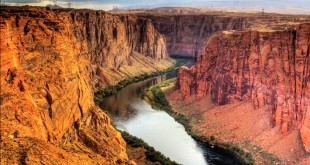By Miriam B. Weiner
As temperatures begin to drop, powder hounds across the country gear up to welcome a fresh blanket of snow on their favorite slopes. For many, a winter vacation complete with snowy weather is the dream. But while a few inches are always welcome, sometimes, Mother Nature takes things too far. To give you an idea, we’ve looked back at the biggest snowstorms in U.S. history.
The Great White Hurricane
1888
After a relatively mild winter season, this infamous storm rocked the East Coast with ferocious winds and 40 to 50 inches of snow. The wind and massive snowfall resulted in drifts that stood up to 50 feet high in some places, stopping trains on their tracks. Across Connecticut, New York, and New Jersey, homes were blockaded shut by towering snow mounds, and ships in the Atlantic struggled to stay afloat in the face of vicious gales.
The Great Blizzard
1899
Twenty to 30 inches of snowfall may sound like a dream to the average skier or snowboarder, but for those living in the South, the Great Blizzard of 1899 took its toll. Dropping its first flakes in Tampa, Florida – a city unaccustomed to snow – the Great Blizzard rolled across the Southern U.S. with gusto. Cities from Florida and Louisiana and as far north as Washington, D.C., were left completely incapacitated.
The Great Lakes Storm
1913
This blizzard (also known as the White Hurricane) remains the deadliest natural disaster to hit the Great Lakes region, resulting in roughly 250 deaths. The storm raged for five days, bringing with it intense winds that sustained more than 60 miles an hour for a full 12 hours. Because the storm occurred in November, the lakes had not yet closed to boat traffic. The hurricane-force winds caused waves to reach 35 feet high, toppling 18 ships.
The Knickerbocker Storm
1922
Over the course of two days in January 1922, the Knickerbocker Storm pummelled the Mid-Atlantic region with 28 inches of snow, bringing the U.S. capital and towns across Maryland, Virginia, and Pennsylvania to a grinding halt. Because the snow was particularly wet and heavy, it caused roofs across the region to collapse, including that of the beloved Knickerbocker Theater in Washington D.C., earning the storm its nickname.
The Great Appalachian Storm
1950
Right around Thanksgiving time in 1950, the Great Appalachian Storm rolled across the Carolinas, making its way towards Ohio. Along the way, it dumped as much as 57 inches of snow in some areas, while others experienced heavy rains and wind. The storm – which was later used as a case study in tracking and predicting the weather – was incredibly destructive, costing more than 350 people their lives.
The Chicago Blizzard
1967
The Windy City is no stranger to challenging winter weather, but in 1967, a storm blew in that knocked even the hardiest Chicagoan off their feet. While residents expected to see a few inches fall, the Chicago Blizzard dropped 23 inches of snow, bringing the city to a grinding halt. For several days, more than 50,000 cars and 800 Chicago Transit Authority buses sat abandoned throughout the city, waiting to be dug free from the drifts.
The Storm of the Century
1993
Stretching from Canada as far south as Jacksonville, Florida, and affecting as many as 26 states, The Storm of the Century truly earned its moniker. In the end, the storm resulted in around 300 deaths and $10 billion in damages. But it could have been far worse. Several days before the first flakes fell, the National Weather Service was able to use computer models to issue severe weather warnings, allowing governors to declare states of emergency for the first time.
The Blizzard of ‘96
1996
Over several days in January 1996, cold air from Canada collided with warm, wet air from the Gulf of Mexico, resulting in the perfect storm of devastating winter weather. Major cities up and down the Eastern Seaboard saw between 17 and 30 inches of snow and heavy winds. Immediately after the blizzard, temperatures rose dramatically, resulting in heavy flooding all along the East Coast.
The Massachusetts Blizzard
2005
Over the course of two days in late January 2005, Boston witnessed as much as five inches of snowfall an hour, which was whipped into massive drifts by 80 mile-per-hour winds. Buildings throughout the city were caked in snow and ice. But Bostonians took the storm in stride. Once the skies cleared, residents grabbed their cross-country skis and snowshoes and set out to enjoy their snow-blanketed city.
Snowmageddon and The Thundersnow
2010
The start of the new decade was memorable for many East Coasters. First, in February 2010, three back-to-back snowstorms buried the Northeast over the course of 20 days, leaving many stuck indoors for weeks, with unreliable power, as snowplows struggled to clear the roads. Then as the year drew to a close, a unique phenomenon known as a “thundersnow” (when thunder and lightning are accompanied by heavy snow) struck the region in the days after Christmas, grounding as many as 7,000 flights.
(adsbygoogle = window.adsbygoogle || []).push({}); Tourist Destinations World Travel Guides
Tourist Destinations World Travel Guides



